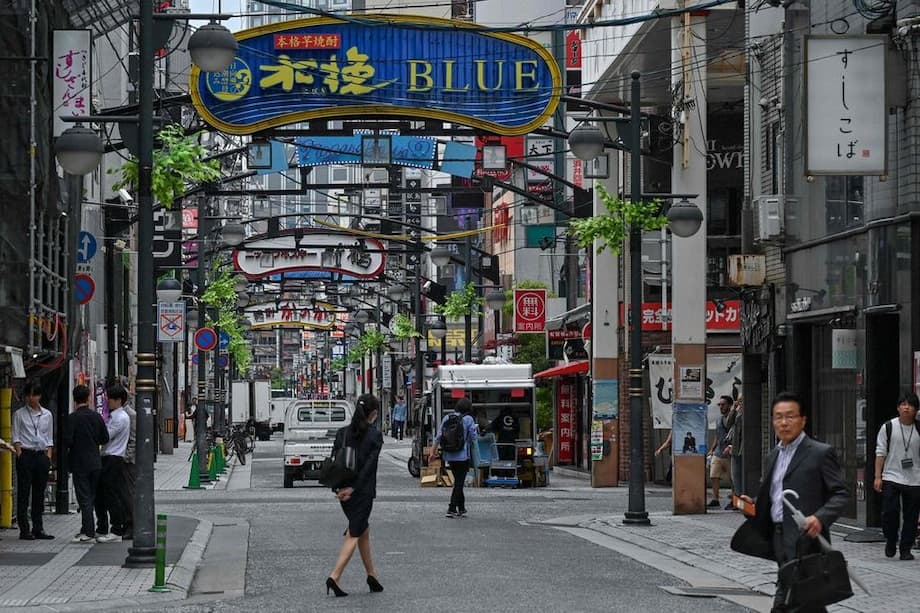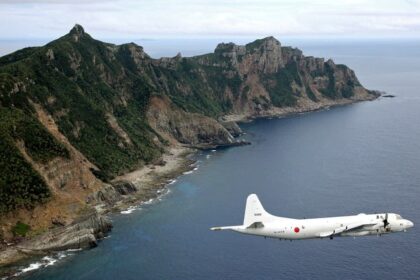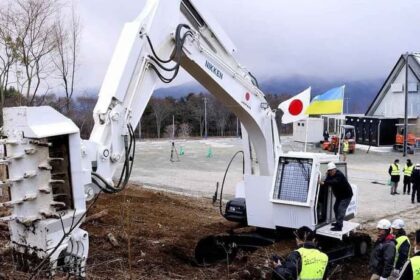Japan’s Tourism Surge: A New Era of Experiential Travel
Japan is experiencing an unprecedented tourism boom in 2025, with international arrivals expected to surpass 40 million by year’s end—a record that cements the country’s status as one of the world’s most sought-after destinations. This surge is not just about numbers; it’s about a fundamental shift in what travelers seek and how locals are responding. The rise of quirky, immersive, and personalized tours is transforming Japan’s tourism landscape, offering visitors experiences that go far beyond traditional sightseeing.
- Japan’s Tourism Surge: A New Era of Experiential Travel
- What’s Driving the Shift Toward Experiential Tourism?
- Adventure, Wellness, and Sustainability: The New Pillars of Japanese Tourism
- Economic Impact and Opportunities for Locals
- How Japan Compares Globally: A Leader in Experiential and Sustainable Tourism
- In Summary
Several factors have converged to fuel this boom. A weakened yen has made Japan more affordable for foreign visitors, while major global events like the World Expo 2025 in Osaka have drawn international attention. Social media platforms such as Instagram and TikTok have amplified Japan’s appeal, turning hidden gems and unique experiences into viral sensations. As a result, both high-spending tourists and budget travelers are flocking to Japan in record numbers, eager for authentic, offbeat adventures.
What’s Driving the Shift Toward Experiential Tourism?
The concept of experiential tourism—where travelers actively participate in local culture, adventure, and lifestyle—has become the defining trend of 2025. Unlike traditional package tours, experiential travel emphasizes meaningful engagement, personal growth, and memorable stories. In Japan, this trend is visible in the explosion of tours that offer everything from underground sports-car drifting lessons to bar-hopping in Tokyo’s neon-lit Shibuya district.
Laurence Takeshi Jeffers, a former securities trader, is now at the forefront of this movement. Through his company, Matnero&Co, Jeffers guides visitors into Japan’s underground sports-car scene, offering drifting lessons—a motorsport technique popularized by movies and anime. Meanwhile, university student Ryota Maruoka founded Trip Port, which began with bar-hopping tours and has since expanded to cycling excursions and calligraphy classes. These ventures are thriving, with strong sales and optimistic projections, as tourists crave experiences that can’t be found in guidebooks.
According to the Japan National Tourism Organization, over 28.5 million international travelers arrived in the first half of 2025 alone, putting Japan on track to exceed 40 million visitors by year’s end. Spending by foreign tourists has reached historic highs, with $32.2 billion spent in the first quarter of 2025—a 23% increase from the previous year. This influx has exposed gaps in the market for personalized and offbeat experiences, creating opportunities for enterprising locals to launch new businesses with relatively low startup costs.
Changing Demographics and New Travel Styles
Japan’s tourism boom is not limited to any one demographic. While China and South Korea remain the largest inbound markets, there has been a notable rise in visitors from the United States, Canada, Taiwan, and Singapore. Young solo travelers (aged 18-28) are a growing segment, especially for budget and adventure tours. Families, Muslim travelers, and luxury tourists are also on the rise, prompting the industry to diversify its offerings with halal-friendly services, family adventures, and tailor-made luxury journeys.
Travelers are increasingly seeking immersive activities such as temple stays, tea ceremonies, anime pilgrimages, artisan workshops, and wellness retreats. The demand for unique, flexible, and custom tours is so strong that customized travel is expected to capture 68% of Japan’s tourism market in 2025. Repeat visitors, in particular, are spending more on experiences that go beyond accommodation and meals, fueling a vibrant ecosystem of niche tours and local guides.
Adventure, Wellness, and Sustainability: The New Pillars of Japanese Tourism
Adventure tourism is a major growth driver in Japan, with the market projected to soar from $27.5 billion in 2024 to $88.6 billion by 2033. Activities like hiking, cycling, surfing, and even hot air ballooning are attracting both domestic and international travelers. Companies are investing in infrastructure and digital marketing to make these experiences more accessible, while technology—such as smartphone apps and virtual reality—enhances trip planning and engagement.
Wellness and slow travel are also gaining traction. Many visitors are opting for stays in traditional ryokan inns with onsen (hot spring) experiences, spiritual temple retreats, and countryside explorations that emphasize relaxation and connection with nature. The trend toward “calmcations”—holidays focused on tranquility and digital detox—reflects a broader desire for transformation and escape from the stresses of modern life.
Sustainability has become a central concern for both travelers and authorities. Overtourism at iconic sites like Mount Fuji and Miyajima has prompted the introduction of entry fees, daily visitor caps, and new regulations to preserve natural and cultural resources. The government is actively promoting regional tourism to distribute visitors more evenly and support rural economies. Initiatives include the development of eco-friendly accommodations, carbon-neutral transport options, and responsible tourism campaigns that encourage respect for local customs and environments.
Technology and Innovation in the Tourism Sector
Japan’s tourism industry is embracing digital transformation to enhance visitor experiences and manage growth. AI-powered planning tools, multilingual travel platforms, and virtual reality tours are making it easier for tourists to customize their journeys and access information. Local governments and private companies are investing in smart tourism infrastructure, from digital ticketing to real-time crowd management systems.
Social media continues to play a pivotal role in shaping travel trends. Influencers spotlight hidden gems and immersive activities, driving demand for experiences that are both Instagrammable and meaningful. The rise of “bleisure” travel—where business trips are extended for leisure activities—has further diversified the market, with travelers seeking to maximize their time in Japan by combining work and play.
Economic Impact and Opportunities for Locals
The economic benefits of Japan’s tourism boom are substantial. Tourism is now a major contributor to the national economy, second only to the automotive sector. In 2024, tourists spent a record 8.14 trillion yen ($50.8 billion), with shopping, accommodation, and dining as the top spending categories. The influx of high-spending visitors has created jobs, boosted local businesses, and spurred investment in infrastructure and services.
For Japanese residents, the rise of experiential tourism has opened up new income streams. The low cost of starting a tour business—often requiring little more than local knowledge and a social media presence—has encouraged many to become part-time guides or entrepreneurs. Companies like Yatra have expanded their reach by employing part-time guides across the country, while others are developing specialized tours for niche markets such as adventure sports, culinary experiences, and cultural immersion.
Local governments are facilitating public-private partnerships to support community-based tourism, especially in underexplored regions. These initiatives aim to spread the benefits of tourism beyond major cities and iconic landmarks, fostering sustainable development and cultural preservation.
Challenges: Overtourism, Currency Fluctuations, and Changing Preferences
Despite the optimism, Japan’s tourism sector faces significant challenges. Overtourism remains a pressing issue, with popular destinations struggling to balance visitor numbers with preservation efforts. The government’s response includes stricter regulations, higher fees for international tourists, and active promotion of lesser-known destinations.
Currency fluctuations pose another risk. While a weaker yen has attracted foreign visitors, shifts in exchange rates can quickly alter travel patterns and spending power. The industry must also adapt to evolving traveler preferences, as trends in adventure, wellness, and sustainability continue to reshape demand.
Labor shortages, especially in hospitality and guiding services, are a growing concern. As the sector expands, there is a need for more multilingual staff, digital skills, and training in customer service. The long-term sustainability of the boom depends on the industry’s ability to innovate, invest in infrastructure, and maintain high standards of quality and authenticity.
How Japan Compares Globally: A Leader in Experiential and Sustainable Tourism
Japan’s approach to tourism in 2025 aligns with global trends toward immersive, meaningful, and responsible travel. Countries like France, Thailand, the UAE, and Spain are also investing in infrastructure, cultural events, and luxury experiences to attract high-end travelers and diversify their offerings. Japan stands out for its blend of tradition and innovation, offering visitors a unique mix of ancient heritage, cutting-edge technology, and vibrant pop culture.
Globally, experiential tourism is on the rise, with travelers seeking deeper connections to people, places, and cultures. The demand for adventure, wellness, and sustainability is shaping the future of travel, as destinations compete to offer authentic and transformative experiences. Japan’s focus on regional tourism, digital innovation, and community engagement positions it as a forward-thinking leader in the industry.
In Summary
- Japan is set to welcome over 40 million international visitors in 2025, driven by favorable exchange rates, major events, and social media influence.
- Experiential tourism—offering immersive, quirky, and personalized activities—is the fastest-growing segment, capturing up to 68% of the market.
- Adventure, wellness, and sustainable travel are key trends, with activities ranging from sports-car drifting to temple stays and eco-friendly retreats.
- The tourism boom is boosting Japan’s economy, creating jobs, and opening new opportunities for locals to become guides and entrepreneurs.
- Challenges include overtourism, currency fluctuations, labor shortages, and the need for sustainable growth and innovation.
- Japan’s strategy of blending tradition, technology, and responsible tourism sets a global example for the future of travel.












